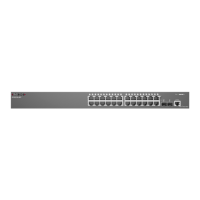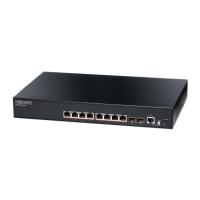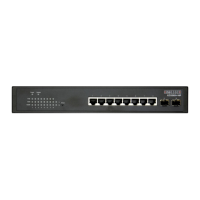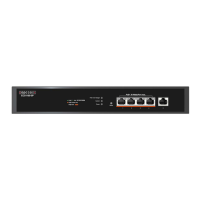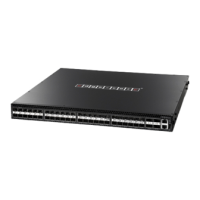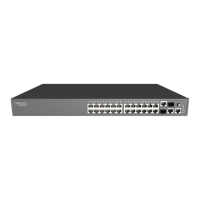Chapter 19
| VLAN Commands
Configuring IEEE 802.1Q Tunneling
– 472 –
indicated priority and appropriate methods of queue management at
intermediate nodes across the tunnel.
◆
Rather than relying on standard service paths and priority queuing, QinQ VLAN
mapping can be used to further enhance service by defining a set of
differentiated service pathways to follow across the service provider’s network
for traffic arriving from specified inbound customer VLANs.
◆
Note that all customer interfaces should be configured as access interfaces
(that is, a user-to-network interface) and service provider interfaces as uplink
interfaces (that is, a network-to-network interface). Use the switchport
dot1q-tunnel mode uplink command to set an interface to access or uplink
mode.
Example
This example sets the SVID to 99 in the outer tag for egress packets exiting port 1
when the packet’s CVID is 2.
Console(config)#interface ethernet 1/1
Console(config-if)#switchport dot1q-tunnel service 99 match cvid 2
Console(config-if)#
The following example maps C-VLAN 10 to S-VLAN 100, C-VLAN 20 to S-VLAN 200
and C-VLAN 30 to S-VLAN 300 for ingress traffic on port 1 of Switches A and B.
Figure 1: Mapping QinQ Service VLAN to Customer VLAN
Step 1. Configure Switch A and B.
1.
Create VLANs 100, 200 and 300.
Console(config)#vlan database
Console(config-vlan)#vlan 100,200,300 media ethernet state active
2.
Enable QinQ.
Console(config)#dot1q-tunnel system-tunnel-control
3.
Configure port 2 as a tagged member of VLANs 100, 200 and 300 using uplink
mode.
Console(config)#interface ethernet 1/2
Console(config-if)#switchport allowed vlan add 100,200,300 tagged
Console(config-if)#switchport dot1q-tunnel mode uplink
Switch C
Switch BSwitch A
Port 1
Port 2
Port 1
Port 2 Port 2
Port 1
[SVID 100, CVID 10]
[SVID 200, CVID 20]
[SVID 300, CVID 30]
[SVID 100, CVID 10]
[SVID 200, CVID 20]
[SVID 300, CVID 30]
[VID 10]
[VID 20]
[VID 30]
[VID 10]
[VID 20]
[VID 30]

